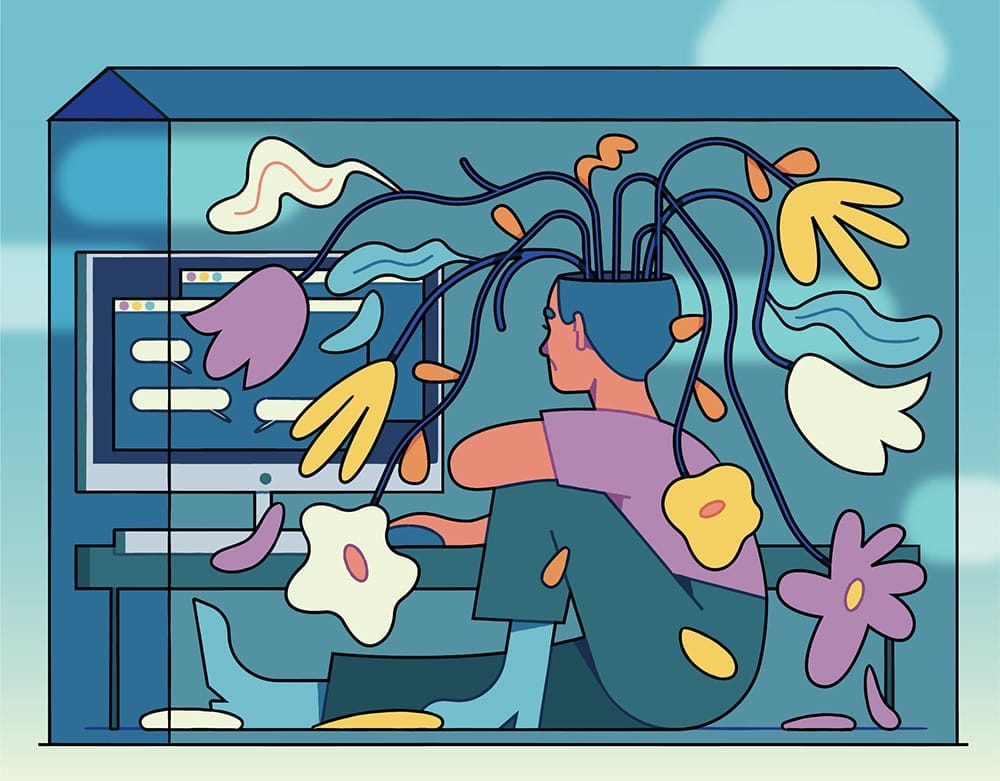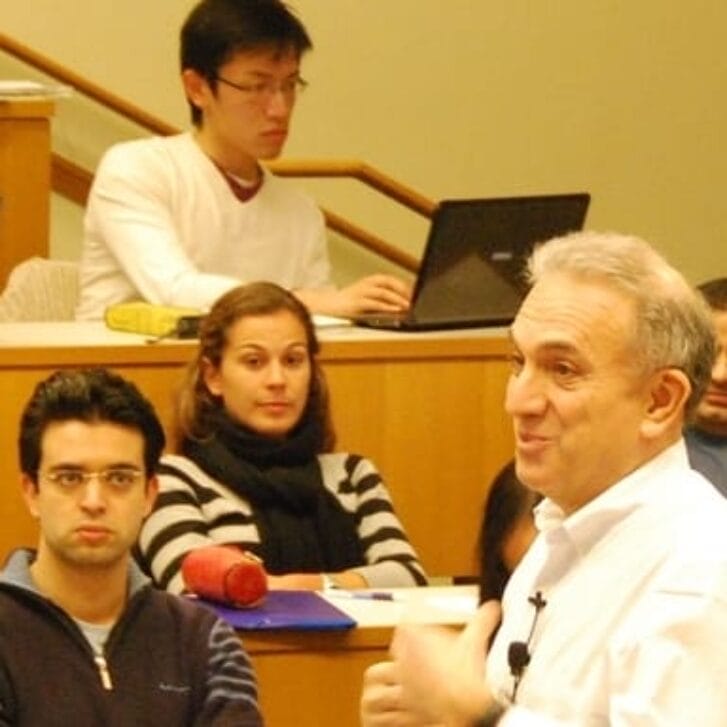Even before the pandemic, loneliness was a widespread problem affecting Americans of all ages and backgrounds. While the rise of remote work in recent years has boosted work-life balance and flexibility, it has also had costs, with many remote workers reporting feeling lonely at home. Michael Platt, a professor of marketing, psychology, and neuroscience and director of the Wharton Neuroscience Initiative, joined Wharton Business Daily host Dan Loney on SiriusXM to discuss loneliness, its impact on the brain, and how remote workplaces do little to foster an engaged and social culture among employees.
Dan Loney: Loneliness and the brain — take us into the connection here. And what is it that drives your interest in looking at it?
Michael Platt: This is the key part of the human adaptive tool kit. We cooperate on a scale that is not observed anywhere else in the animal kingdom. This has allowed us to build great universities and reach the moon, but there are some serious consequences here. For most of us, there’s a real, deep need to connect with other people — to have friends and social support. That social support is critical to survival, for success in the world, and for your health and well-being.
Loney: You talk about connection being a lifelong element. It starts right when we are born — the connection that a baby has with its father and mother.
Platt: That’s absolutely the case. Our relationships are key to how we navigate the world. In fact, every one of us has a specialized network of brain areas we call the social brain network that manages both our moment-to-moment interactions with other people and our long-term relationships. What’s really amazing: We now know that people who have more friends or deeper friendships — their social brain network is actually bigger. And we know some of that comes from what you got from your parents, but so much more of it is up to how you use it. You can strengthen it like a muscle.
Loney: The element of loneliness is one that we can see pop up at a variety of different points in our lives, correct?
Platt: This is one of the most profound and, I think, disturbing parts of modern life. Before the pandemic, half of people said they felt lonely in the past year, and 20 percent of young people said they didn’t have a single friend. And we know that loneliness is worse for your health than being diabetic or being overweight. It’s really incredible.
Loney: Because of the pandemic, we were alone or cut off from our friends in many cases. Now, we have work from home, which again thrusts a variety of people into being by themselves for a majority of their working lives.
Platt: We know that during the pandemic, when everybody was working from home, rates of anxiety and depression skyrocketed. The depths of despair in this country accelerated. So this is a big deal. On the one hand, being able to work from home has some great benefits — it’s more flexible, you don’t have to wear pants, you can fold laundry and pet your cat. But you lose that critical connection to the people you work with. This is particularly challenging for young people, because if you’re just entering the workforce or you’ve just been hired by a company, you don’t have that opportunity to form strong connections and to develop mentors in the office. What we saw over the course of the pandemic is that at companies where engagement was higher, their workforce was more connected to each other and to the company; they actually performed much better during the pandemic. And we’ve seen this time and time again. That kind of social connection is really critical.
Loney: Should we consider — and maybe to a degree, we already do — loneliness within the larger focus on mental health that is being discussed more frequently these days, especially in our business communities?
Platt: The surgeon general, Vivek Murthy, recently put out an advisory on loneliness. In it, he described all of the things that I just talked about in terms of the impact on mental health and well-being. A lot of solutions lie with government, but so much more is potentially in the wheelhouse of the private sector: Can we create work conditions that are optimal for fostering the kinds of social connections that keep people happy, healthy, and therefore more productive and engaged?
Loney: What are some ways you do that?
Platt: I think we’ve all experienced that there’s just something not quite right when you’re staring at a tiny flat box where a three-dimensional human being has now been squashed into two dimensions. And the nonverbal cues that are so important — they’re just not there. That’s the reason we feel Zoom fatigue. Our brains really struggle under those conditions. How do we get beyond that? I think we have to be in the same place with people, at least some of the time. One of the things that we really emphasize is giving people space and time — and sometimes a prompt — to actually talk to each other. That is how we build connections.
Loney: Having done the research that you have during your career, it has to be very interesting that businesses have taken a deeper dive into how some of these components are impacting their employees.
Platt: I’ve been working on this for my entire career and have spent a lot of my career studying monkeys, which depend on each other in the same way we do. We found that in monkeys, going through a natural disaster aged them by about two years. That’s like eight years of human life; you don’t want that to happen to you. The monkeys who were most resilient and who were more likely to survive were the ones who reached out and made more friends. The conclusions that we can draw for ourselves couldn’t be more vivid.
Loney: The importance of connection between employees is interesting because we’ve relied on it so much, and yet all of a sudden, because of the pandemic, there are generations out there that don’t feel that’s maybe as important as it has been in the past.
Platt: I think they have the need; they just don’t know it. The need to connect with other people is so strong that we feel craving for it in the same way we crave food or drugs. It involves the same bits of the brain. One thing I’ve heard a lot from business leaders is that generations that are joining the workforce are different from other generations. And when you think about why, they’re digital natives — they grew up online, with smartphones in their pockets and with social media. That’s a very different way of interacting with other people. And it may not be the best way to tune up the networks in our brains that we use to navigate relationships.
Published as “At Work and All Alone” in the Fall/Winter 2023 issue of Wharton Magazine.


























